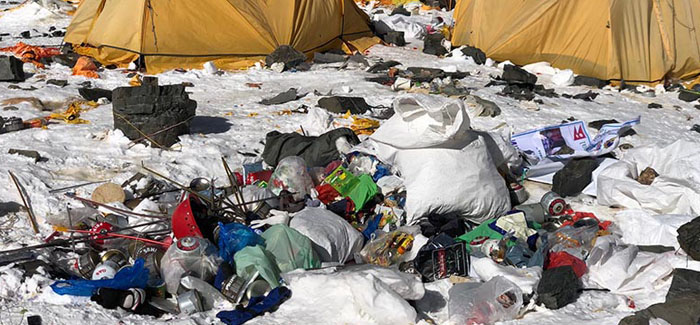Cleanup expedition of Mount Everest ended with collection of tons of rubbish and dead bodies
An expedition to clean Mount Everest was able to remove about 11,000 kilograms of trash and four corpses. It is reported that it took 45 days for cleaners and volunteers to collect rubbish like plastic bottles, cans, food containers, and empty oxygen cylinders among many other trash found. The expedition was led by Dawa Steven Sherpa in an effort to cleanup the mountains above the 8,000-m mark as it is reported to be the dirtiest it has ever been.
Some of the trash collected during the expedition was sent over to Kathmandu, Nepal in order to be recycled. This was done on a Wednesday during a ceremony that officially concluded the campaign. According to the officials, it was a successful mission but reiterated that there were still a lot of rubbish to be taken care of. They add that some of the trash are covered in snow, thus can only be collected when the temperature goes higher in the coming months.
Unfortunately, officials are unable to estimate the amount of garbage currently on the mountain. They state that most were found at Camps 2 and 3 wherein climbers usually rest at. Officials are now prohibiting the use of single-use plastics in the Mount Everest area in the hopes of reducing the amount of trash whenever there are tourists and climbers. The said ban is in effect by January 2020. This will include all kinds of plastics such as bags, straws and bottles.
Moreover, the bodies found were only exposed because the snow had melted. They were then carried to the camp and sent over to a Kathmandu hospital to be identified. They said that the struggling climbers who want to go down the mountain are unable to bring the bodies of their dead teammates on the way down.

Because of this, changes have also been in the works which includes additional safety measures to avoid issues like this. A committee was made to address the incident during a mountaineering season wherein 11 people were killed on their journey to conquer Mount Everest.
The committee requires that scaling permits for Mount Everest can only be acquired by those who have previously climbed a peak of 21,320 feet or 6,500 meters or higher. Moreover, they also require climbers to have a qualified and experienced guide during the climb. The committee also recommends $35,000 fee for Mount Everest for the permit. Currently, the fee is only $11,000 for a team.
The Everest was first conquered by Edmund Hillary from New Zealand and Nepalese Tenzing Norgay in 1953 after seven weeks of climbing. Since then, officials report that over 300 climbers have already died trying to climb the mountain. However, the exact number of casualties remains to be unknown.

Every spring, many climbers and other mountaineers spend weeks to months at the Everest as it is considered to be the best climbing season. The months of March to May are usually the best times for climbing. It is estimated that Mount Everest is visited by up to 50,000 tourists every year.




